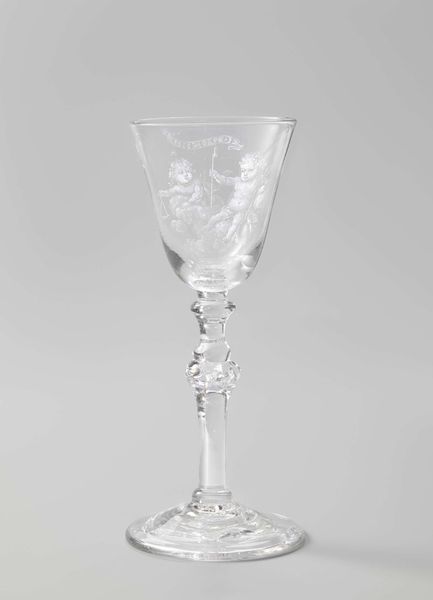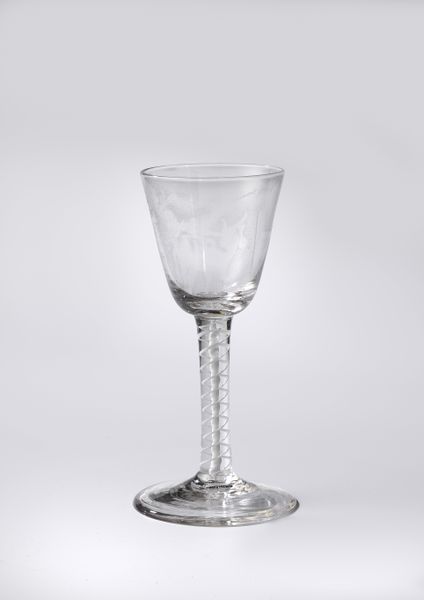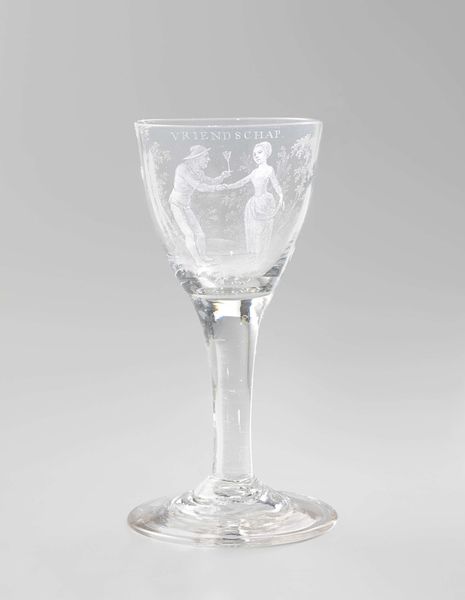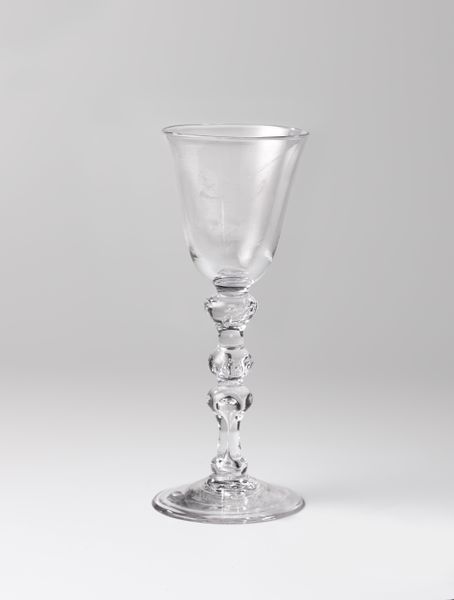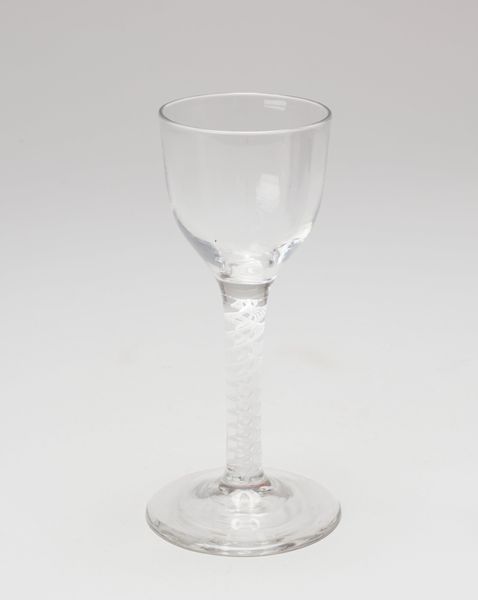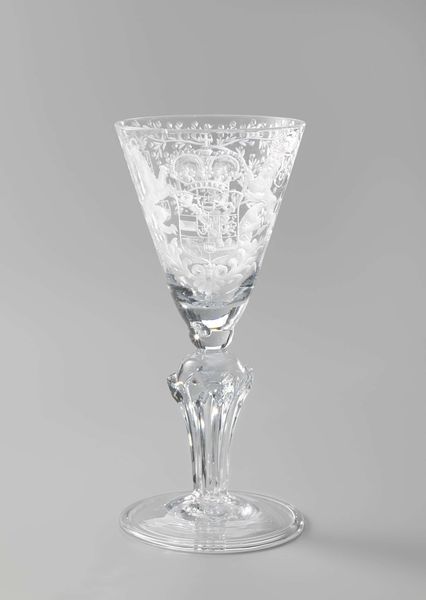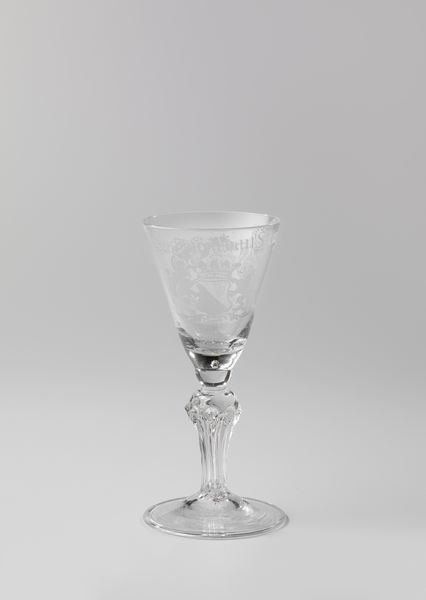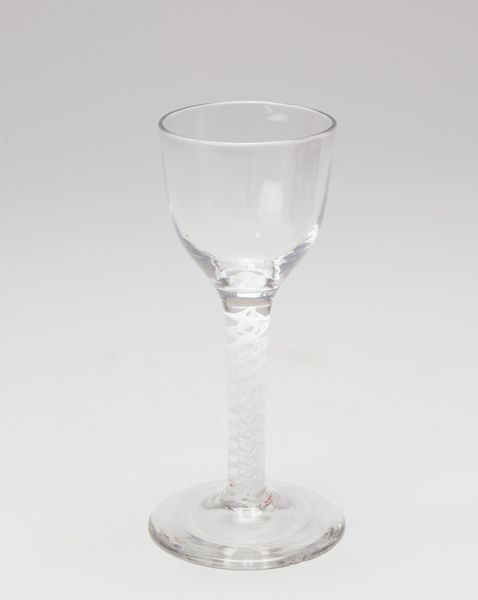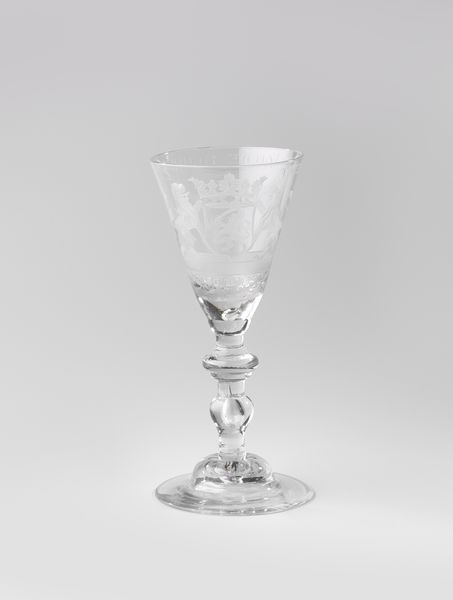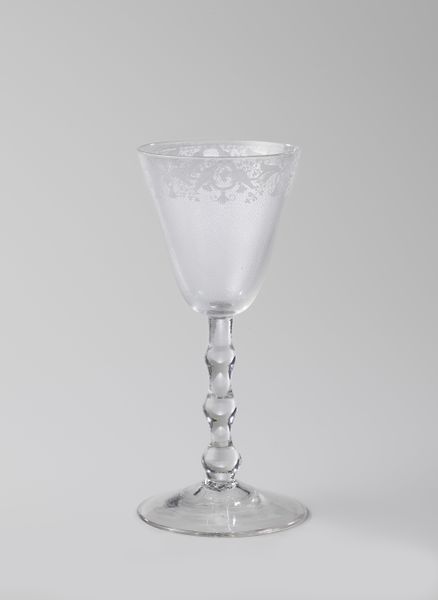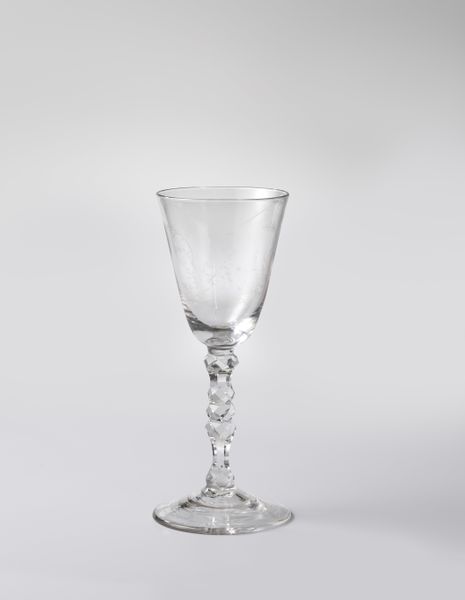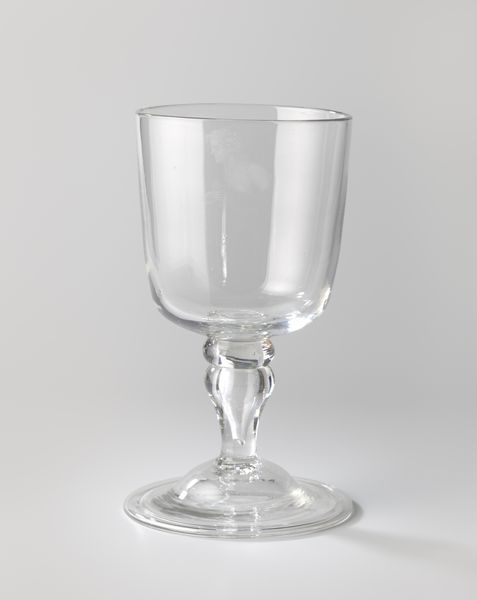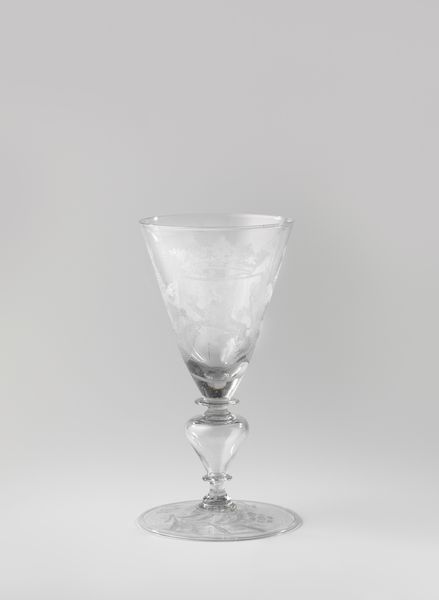
#
repetition of black
#
cake food
#
swirl
#
culinary art
#
appetizing
#
food illustration
#
floral photography
#
framed image
#
united-states
#
food art
#
food photography
Dimensions: 9 1/8 x 4 1/4 in. (23.2 x 10.8 cm)
Copyright: Public Domain
Curator: Here we have a glass vase made by George Duncan and Sons, dating roughly from 1875 to 1890. Editor: My first impression is one of delicate beauty, but there’s also something strangely mournful about it. Perhaps the black and white photo exaggerates this feeling? Curator: Possibly. The form speaks volumes about production at the time. Glassblowing, cutting, and etching—all requiring specific skilled labor. Think about the glassworkers, the design choices that mirror contemporary tastes. Were these readily available to everyone? Or did they symbolize status and aspirations? Editor: Absolutely, and I’m immediately drawn to the face molded on the stem—a Janus figure, perhaps? Looking both forward and backward, guarding a threshold. And the engraved fronds that wind around the body. They look like stylized ferns, suggesting growth and perhaps remembrance. Curator: Etching these details must have been highly specialized work. Consider the cultural significance. During the Victorian era, floral motifs often carried hidden meanings, and these objects served both practical and symbolic functions. We are only seeing a photograph of the original, which means we're missing important clues about reflections and light on the object itself. Editor: Precisely. Beyond surface decoration, the flowers are suggestive of specific events such as weddings or even funerals; vessels, in and of themselves, become carriers of collective and personal experiences over time. Curator: The name etched across the top, 'Royal Saratoga', seems like a proprietary designation; its a signal for exclusivity. How does that function in the culture of the day versus how we might receive the vase today, viewed within a museum setting? Editor: I see how, through careful design and craftsmanship, even an everyday object transcends its function, to hold meanings layered in history and personal associations. Curator: Yes, this piece is more than meets the eye. It really illuminates aspects of labor, commerce, and social display during the period. Editor: It offers a small, but compelling glimpse into the values and emotions of a time long past, encoded in material form.
Comments
No comments
Be the first to comment and join the conversation on the ultimate creative platform.
